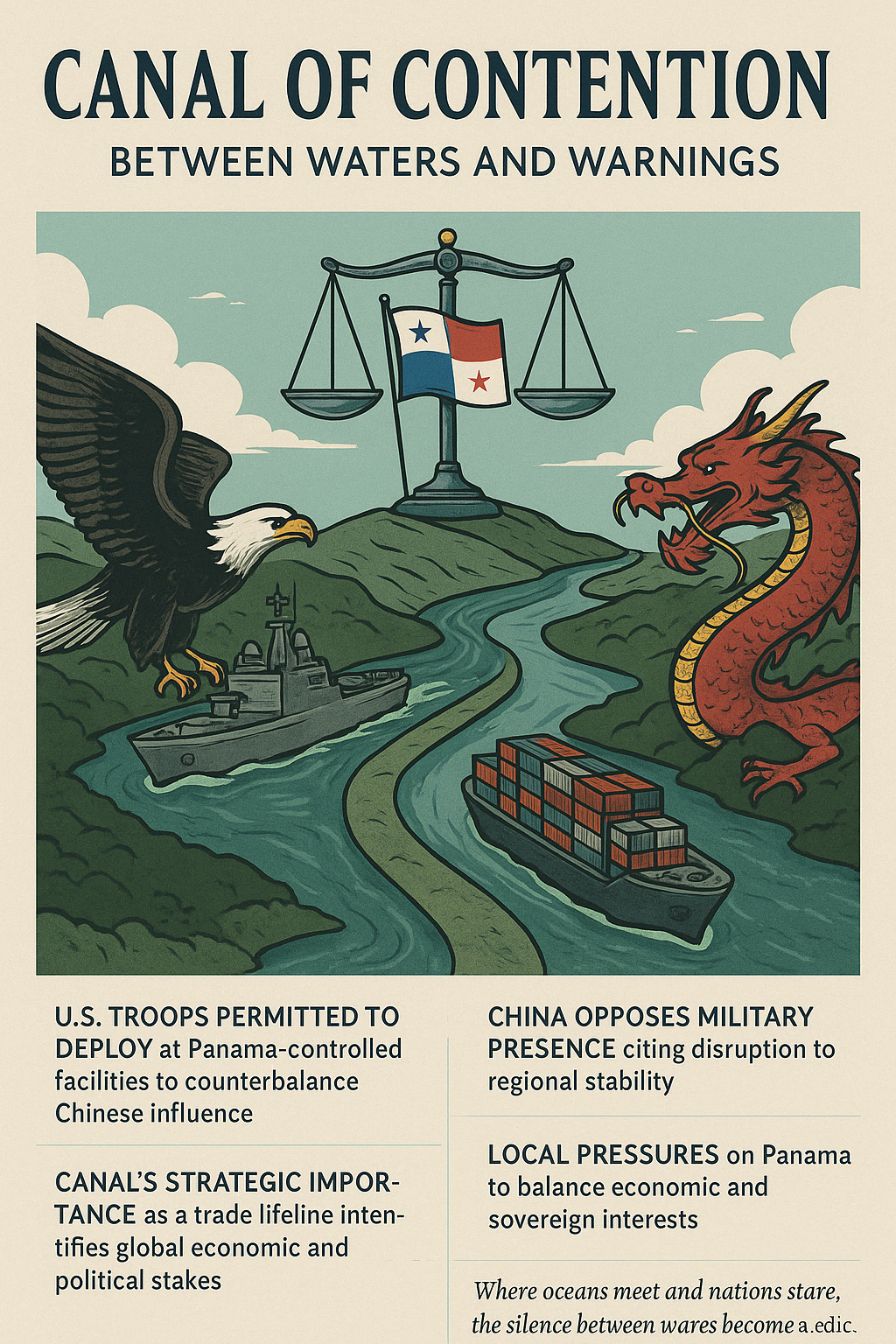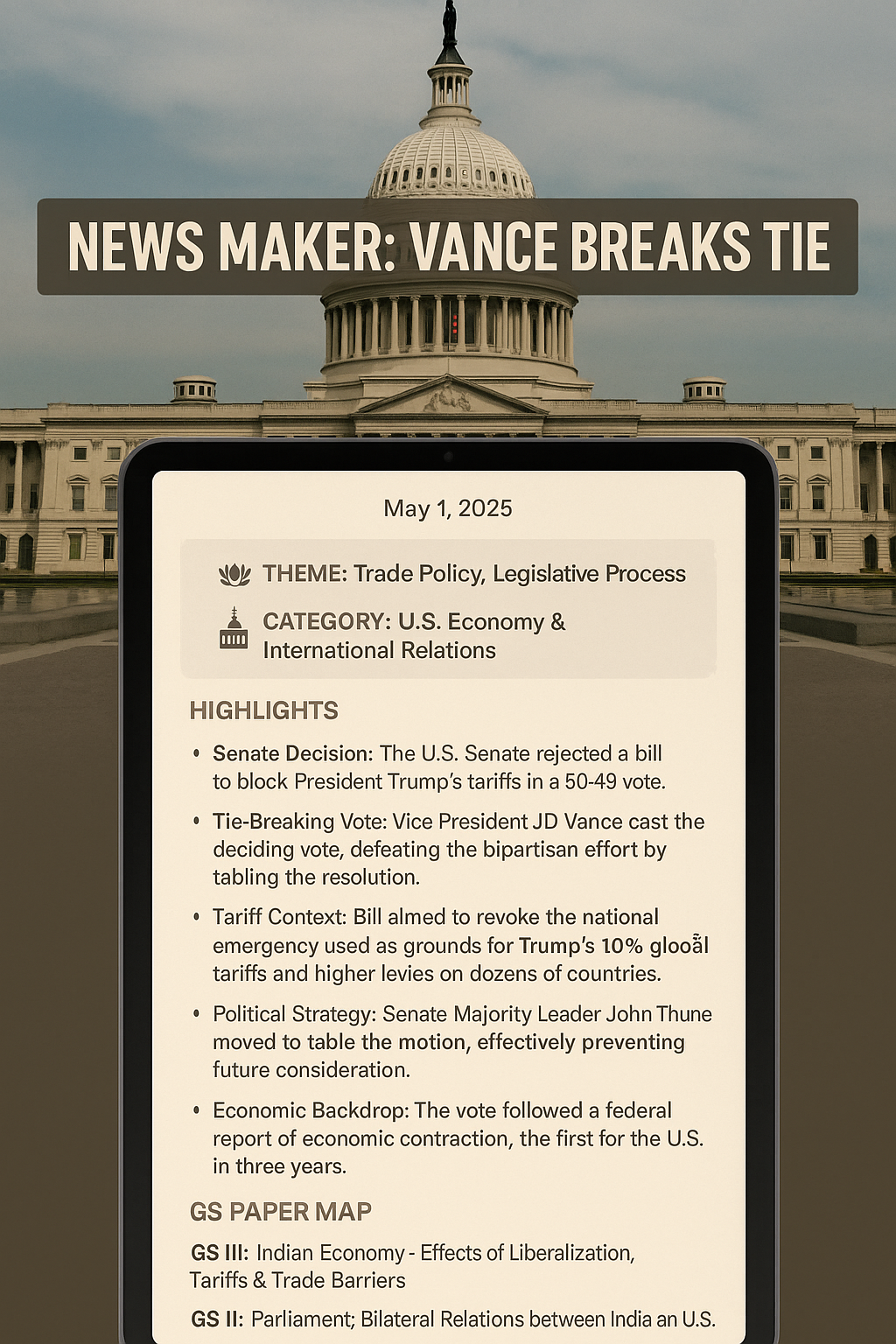
🧭May 20, 2025, Post 2: Rewiring the Silk Route: India and EU Close in on a Trade Accord | High Quality Mains Essay | Prelims MCQs
🧭 Posted on May 20, 2025
Rewiring the Silk Route: India and EU Close in on a Trade Accord
INTERNATIONAL RELATIONS

🌍 Thematic Focus:
India-EU Relations | Global Trade | Free Trade Agreements | Strategic Partnerships
🕊️ Opening Whisper
Across continents and currencies, a new handshake awaits.
🔍 Key Highlights:
- India and the European Union (EU) have agreed to fast-track negotiations for a comprehensive Free Trade Agreement (FTA), aiming to seal the deal in two phases by the end of 2025.
- Talks resumed in June 2022 after a hiatus since 2013, stalled earlier due to market access and regulatory hurdles.
- The current phase includes discussions on duty reductions, investment protection, services trade, and IPR alignment.
- The FTA will follow a phased approach, inspired by India’s model with Australia, and considers the evolving global trade climate.
- The EU remains India’s largest trading partner in goods, accounting for USD 137.41 billion in bilateral trade in 2023–24.
🧱 Strategic Areas of Negotiation:
- Market Access
– EU seeks lower tariffs on automobiles, wines, spirits, poultry, and medical devices.
– India pushes for greater access in ready-made garments, generic drugs, electrical machinery, and IT services. - Services and Investment
– Talks include liberalisation of professional services, financial services, and data governance norms.
– India aims for stronger investor protections and dispute settlement mechanisms. - Geographical Indications & IPR
– EU demands strict enforcement of GI and IPR rules, which may affect India’s exports like Basmati rice and Darjeeling tea. - Sustainability & Regulation
– Sustainability chapters include labour and environmental standards, and green tech cooperation.
🌐 India–EU Relations: A Strategic Backdrop
- Early Roots: Partnership dates back to the 1960s; upgraded to a Strategic Partnership at the 5th India–EU Summit in 2004.
- TTC Formation: In 2023, the Trade and Technology Council (TTC) was launched to drive tech and trade coordination.
- R&D Cooperation: India and EU also collaborate on nuclear energy research, water governance, and digital standards.
⚖️ Why This Matters for India
- Boosts economic diversification beyond China and the US.
- Enhances India’s profile in global value chains, especially in pharma, textiles, green tech, and IT.
- Strengthens India’s voice in EU-Asia economic architecture amid rising protectionism and US-China trade frictions.
📘 GS Paper Mapping:
- GS Paper 2: India and Regional Groupings | Bilateral Agreements
- GS Paper 3: Trade Policy | IPR | Investment and Economic Development
- Essay/Interview: Reforms in Global Trade | India as a Rule-Shaper
✨ A Thought Spark — by IAS Monk
True trade isn’t just an exchange of goods; it’s an agreement on values, standards, and the shape of the future.
High Quality Mains Essay For Practice :
Word Limit 1000-1200
Forging the Future: The India-EU FTA and the Politics of Global Trade
Introduction
In an increasingly fragmented and protectionist global economy, regional alliances and bilateral agreements have become critical pillars of strategic diplomacy. Among them, the India–European Union Free Trade Agreement (FTA) stands out not only for its scale but also for its transformative potential. After stalling in 2013, negotiations resumed in 2022 with renewed vigour, and both sides are now aiming to conclude a comprehensive FTA in a phased manner by the end of 2025. This agreement, if finalized, would create one of the world’s largest free trade zones, linking 1.9 billion people across two democratic, market-driven economic spaces.
Background and Revival
India and the European Union share a history of trade and cooperation dating back to the 1960s. However, negotiations for an FTA—formally called the Broad-based Trade and Investment Agreement (BTIA)—collapsed in 2013 due to disagreements over tariffs, investment protections, and intellectual property rights. The pause reflected the wider tension in global trade governance during that decade.
Talks resumed in June 2022, driven by:
- India’s recalibrated trade strategy post-COVID and RCEP withdrawal
- EU’s urgency to diversify away from China and reinvigorate its Indo-Pacific engagement
- Shared concerns over supply chain disruptions, energy security, and emerging technology standards
The New Trade Template: What’s on the Table?
The revived talks follow a two-phase structure, inspired by India’s FTA with Australia, allowing early harvest agreements before finalizing contentious chapters. The core areas under negotiation include:
- Market Access and Tariffs
The EU is pushing for steep tariff reductions on high-value goods like automobiles, wines, spirits, and dairy products, while India seeks better access for textiles, pharmaceuticals, leather, and information technology services. - Services and Investment
Both parties are negotiating liberalised regimes for digital services, professional visas, and fintech investment, along with stronger investor-state dispute settlement mechanisms. - Regulatory Alignment and IPR
The EU wants India to adopt stricter intellectual property rights (IPR) norms, especially for geographical indications and data protection laws. This is a friction point for India’s generic pharma and traditional products. - Sustainability and Labour Standards
EU demands inclusion of labour rights, environmental protection, and climate action clauses, aligning with its green and ethical trade agenda. India views some of these as non-tariff barriers cloaked in normative language.
Strategic and Economic Implications for India
A finalized FTA with the EU can substantially enhance India’s:
- Export Competitiveness: Through preferential access to a high-income consumer market
- Investment Flow: By assuring EU investors of rule-based arbitration and ease of doing business
- Supply Chain Positioning: By integrating India into European green technology and manufacturing value chains
- Diplomatic Leverage: Elevating India’s influence in global standard-setting platforms such as the WTO, IPEF, and TTC
Political Realities and Challenges
While economic logic supports the FTA, political caution persists on both sides.
- India fears flooding of luxury goods and agricultural imports, potentially hurting small producers.
- The EU is wary of regulatory divergence and labour/environmental non-compliance.
- Both parties must navigate domestic lobbies, upcoming elections, and rising geopolitical unpredictability—including US tariff shifts and EU-China tensions.
Moreover, negotiating with a bloc of 27 EU nations requires complex consensus-building, further slowing down timelines.
Beyond Trade: The India–EU Strategic Partnership
The FTA is only one layer of a multi-dimensional India–EU partnership.
- The Strategic Partnership of 2004 laid the foundation for cooperation in security, cyber policy, and global governance.
- The Trade and Technology Council (TTC) launched in 2023 is a forward-looking platform to manage AI ethics, semiconductor supply chains, and digital standards.
- In energy, science, water governance, and climate tech, the EU sees India as a key developmental ally.
Together, these elements complement the FTA by creating a strategic trust ecosystem, essential for any deep economic integration.
Conclusion
The India–EU Free Trade Agreement is more than a tariff negotiation; it is a test case for 21st-century global cooperation among democracies. It holds the promise of rebalancing trade flows, diversifying strategic dependencies, and setting new rules for innovation, sustainability, and digital ethics. For India, it offers the chance to globalize its strengths—human capital, technology, and entrepreneurship—on fairer terms. For the EU, it secures a reliable partner in Asia’s emerging geopolitical chessboard. Sealing this deal will not only bridge trade—but values, visions, and futures.
Target IAS-26: Daily MCQs :
📌 Prelims Practice MCQs
Topic:
MCQ 1 – Type 1: How many of the above statements are correct?
Consider the following statements regarding the India–EU Free Trade Agreement (FTA):
1. The negotiations were first initiated in 2022.
2. The agreement aims to cover goods, services, investments, and geographical indications.
3. The phased approach to the deal is inspired by India’s earlier FTA with Australia.
4. The agreement has already been signed and ratified by both parties.
How many of the above statements are correct?
A) Only two
B) Only three
C) All four
D) Only one
🌀 Didn’t get it? Click here (▸) for the Correct Answer & Explanation
✅ Correct Answer: A) Only two
🧠 Explanation:
Correct Answer: A) Only two
❌ False – The FTA negotiations were restarted in 2022, but they were originally launched in 2007 and stalled in 2013.
✅ True – The FTA seeks to cover goods, services, investment, and geographical indications.
✅ True – India is adopting a phased strategy, similar to its approach in the India–Australia FTA.
❌ False – The agreement is still under negotiation and has not been signed or ratified.
MCQ 2 – Type 2: Two-Statement Evaluation
Consider the following statements regarding India–EU FTA Negotiations:
1. The EU has sought market access in sectors like automobiles, medical devices, and spirits.
2. The talks are being held under the SAFTA framework.
Which of the above statements is/are correct?
A) Only 1 is correct
B) Only 2 is correct
C) Both are correct
D) Neither is correct
🌀 Didn’t get it? Click here (▸) for the Correct Answer & Explanation
✅ Correct Answer: A) Only 1 is correct
🧠 Explanation:
Correct Answer:
✅ True – The EU demands duty cuts in key sectors such as automobiles, medical devices, wines, spirits, etc.
❌ False – The India–EU FTA is bilateral and not under SAFTA, which is for South Asia..
MCQ 3 – Type 3: Which of the following are correct?
Which of the following statements about the India–EU Free Trade Agreement (FTA) are correct?
1. The talks had been suspended for nearly 8 years before resuming in 2022.
2. The deal will be implemented in a single comprehensive phase.
3. The agreement includes investment and geographical indication protection.
4. The FTA is part of the India–EU Strategic Partnership Roadmap 2020–2025.
Select the correct code:
A) 1, 3, and 4 only
B) 1, 2, and 4 only
C) 2, 3, and 4 only
D) 1, 2, and 3 only
🌀 Didn’t get it? Click here (▸) for the Correct Answer & Explanation
✅ Correct Answer: A) 1, 3, and 4 only
🧠 Explanation:
Correct Answer: A) 1, 3, and 4 only
- ✅ True – The talks resumed in 2022 after being stalled since 2013.
- ❌ False – It will be concluded in two phases, not one.
- ✅ True – Investment and GI protection are part of the scope.
- ✅ True – The roadmap includes goals like concluding the FTA.
MCQ 4 – Type 4: Direct Factual Question
Which of the following is the implementing strategy India has adopted for the EU FTA?
A) Fast-track single-phase negotiation model
B) WTO-mandated bilateral trade harmonization
C) SAARC Trade Facilitation Protocol
D) Two-phase approach modeled after the Australia FTA
🌀 Didn’t get it? Click here (▸) for the Correct Answer & Explanation.
✅ Correct Answer: D) Two-phase approach modeled after the Australia FTA
🧠 Explanation:
Correct Answer: D) Two-phase approach modeled after the Australia FTA
• India is pursuing a phased negotiation approach for the EU FTA, modeled after its FTA with Australia.


















